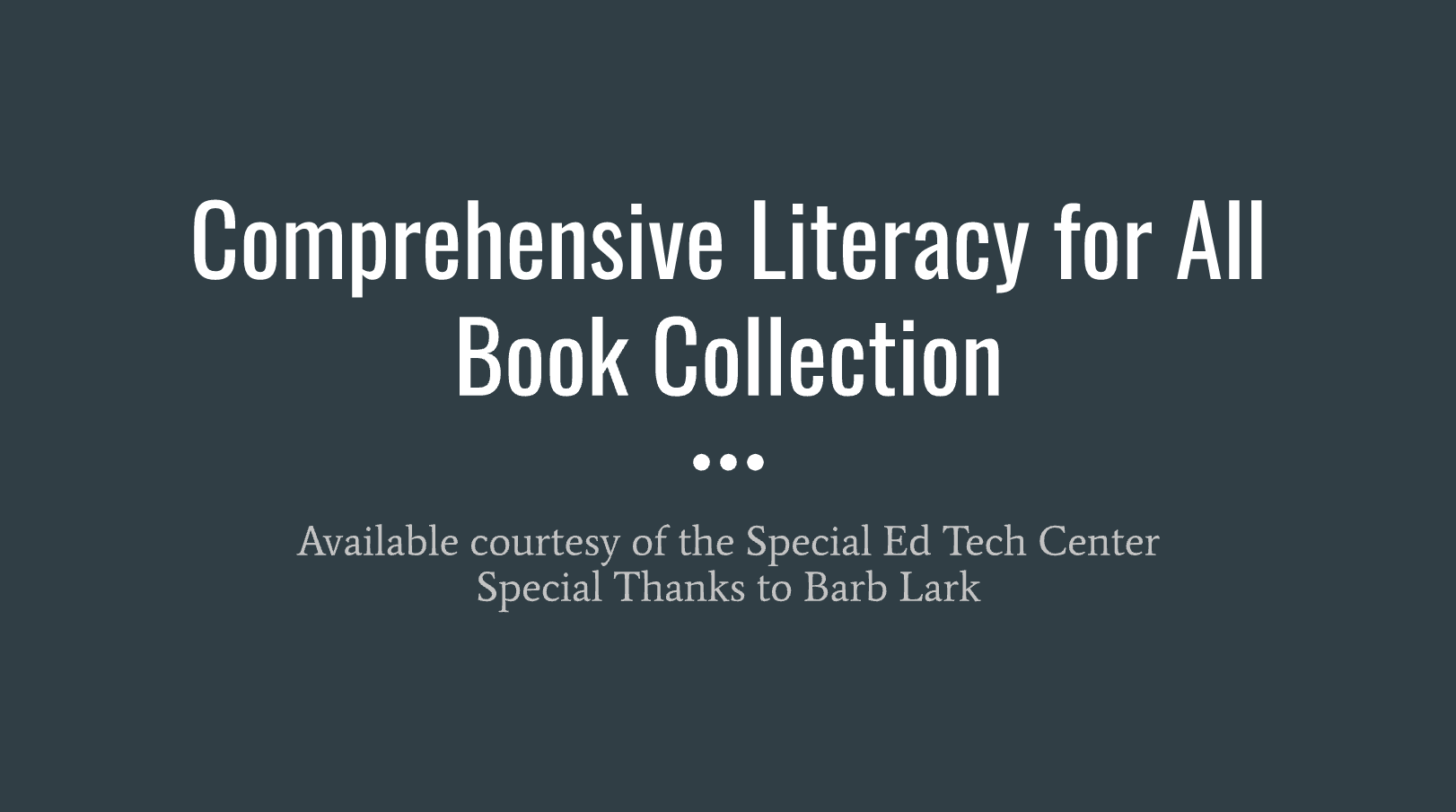by Kathy Smith, MSPA, SLP (Speech-Language Pathologist, retired); NWACS Vice President
reading time: 4 minutes
Kathy recently interview Barb Lark about a special project she has been working on for the Special Education Technology Center (SETC). This project is a collection of books and activities. The aim is to provide meaningful experiences with accessible print for students with emergent literacy skills. The project can be found on the SETC website.
I know you are an SLP specializing in AAC communication, but please describe your professional AAC experiences.
How did you get interested in your literacy project called Comprehensive Literacy for All (CLFA) Book Collection?
I was an SLP in public schools for 37 years. Early on I worked in a preschool setting where learning through books was key! Many of my students had complex communication needs. As time went on, I developed an interest and sought out ongoing training in AAC. In about 1995, I became our district’s Assistive Tech Facilitator. I worked with students across the district who had AAC needs.
A few years before retiring, I worked part-time in a school district and worked 2 days a week as a consultant with the Washington State Special Education Technology Center. I consulted with staff around the state on the use of AAC systems throughout the school day. During that time, I worked closely with a classroom teacher. We developed adapted writing strategies for students with emergent literacy and complex communication needs.
Just as I was retiring, Drs. Karen Erickson and David Koppenhaver published their book Comprehensive Literacy for All. This book was a game changer in my thinking and approach to literacy for students with significant disabilities of all ages. I knew I wanted to volunteer in the field in my retirement. Based on Erickson and Koppenhaver’s book, I have focused on strategies for the component called “Shared Reading.” I developed an online book collection with activity ideas that utilize those strategies.
Describe how you connect literacy and AAC using CLFA strategies.
Literacy is all about language and communication! I’m building an online book collection for use in literacy instruction. Each book’s activity plan has 4 specific purposes for reading each book 4 times per week. Some books are great for alliteration/alphabet knowledge. Some have rhyming or rhythmic components for Phonemic Awareness. I have tried to include books that are fun and relatable to support student motivation and participation. I’ve included many activities that focus on vocabulary and comprehension.
Each lesson plan includes ideas about student participation. That’s where you will see references to the use of “speech, AAC systems, and/or Core Vocabulary + Fringe”. The use of books readily lends itself to modeling and the use of AAC as the student’s mode of participation. Most of the books come with picture supports that staff can print and customize for student needs.
Learning to read while learning to be efficient using an AAC system can be daunting. Have you heard from teachers and/or SLPs about how helpful CLFA has been for children learning to combine the use of their AAC systems and learning to read?
Comprehensive Literacy for All uses evidence-based strategies specifically aimed at people with emergent literacy skills. The focus is on experiencing text in meaningful contexts. Another big focus is increasing student attention and participation. I am hearing that staff find it helpful to use a variety of materials that are natural to the reading activity. This helps students with complex communication needs to take part more spontaneously and independently. They might use a closed set of picture symbols, a closed set of words, and a list with partner-assisted scanning. They might use core vocabulary on a device or board and some fringe vocabulary separately. Each situation and each student will be unique. It’s most important to capture a student’s interest and provide them with a meaningful way to take part. Operational and strategic competencies can be considered during these activities. But they aren’t the major focus at these times.
What have you learned from the feedback you are receiving?
People appreciate having access to the book collection. Many people are excited to implement more CLFA strategies but are at the initial stages. I’m practicing some of the strategies when volunteering with students. It’s really fun and I’m seeing communication and literacy skills improve.
Any changes in the future?
I hope to keep expanding the collection to include more books that others recommend. The CLFA book cited studies that showed students with significant disabilities demonstrate greater skills when they receive literacy instruction within a general education setting. That is powerful knowledge. If there is a way for me to provide activities that support those settings well, I would love to do that.
Thank you, Barb for sharing information about your AAC and literacy project. And thank you for all your work putting this collection together! We are excited to see how it grows.
Reference:
Erickson, K., & Koppenhaver, D. (2020). Comprehensive Literacy for All: Teaching Students with Significant Disa. Brookes Publishing.




